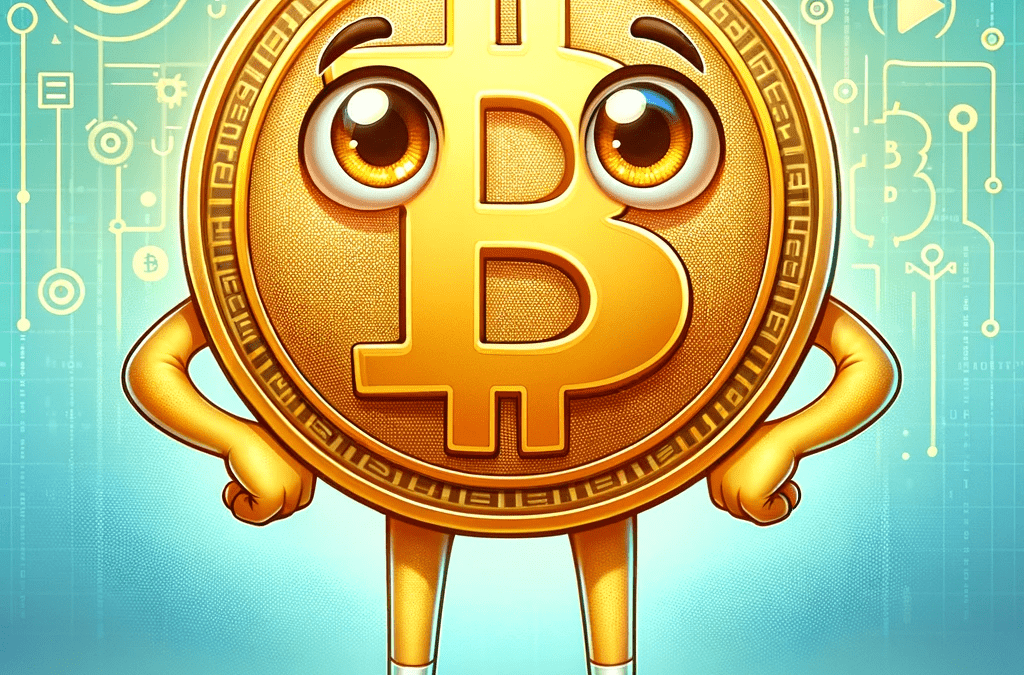April 2024 Bitcoin Halving
Day(s)
:
Hour(s)
:
Minute(s)
:
Second(s)
Understanding The Bitcoin Halving
Bitcoin halving is a significant event in the cryptocurrency world, occurring approximately every four years. It's when the reward for mining new Bitcoin blocks is cut in half. This mechanism is built into Bitcoin's code to control inflation and ensure its scarcity. The halving reduces the rate at which new Bitcoins are created, thereby slowing down the total supply growth. This event is pivotal as it can influence Bitcoin's price and miners' profitability. For investors, understanding the halving is key to grasping Bitcoin's value proposition as a digital asset with limited supply, akin to digital gold.
The Impact of Bitcoin Halving
The Bitcoin halving significantly impacts the cryptocurrency's ecosystem, affecting miners, market dynamics, and investor behavior. When the reward for mining a Bitcoin block is halved, it directly impacts miners' profitability, as their earnings decrease. This can lead to reduced mining activity and a temporary slowdown in the network until adjustments are made. For the market, the reduced flow of new Bitcoins can create scarcity, potentially driving up demand and price, although this isn't guaranteed. Investors often view halving as a pivotal event, sparking increased interest and speculation in the lead-up to and aftermath of the halving. However, it's important to note that while historical trends show a price increase following past halvings, the cryptocurrency market is influenced by a wide range of factors, making future outcomes unpredictable. Understanding the implications of halving is crucial for investors to make informed decisions in the ever-evolving landscape of Bitcoin.
Historical Halvings and Their Effects
Bitcoin has undergone several halving events since its inception, each playing a crucial role in shaping the cryptocurrency's economy and market perception.
-
1st Halving (2012): This event reduced the mining reward from 50 to 25 Bitcoins per block. Following the halving, there was a gradual increase in Bitcoin's price, attributed to reduced supply and heightened investor interest. However, the market was still in its nascent stage, and the overall impact was less pronounced compared to later halvings.
-
2nd Halving (2016): The reward dropped from 25 to 12.5 Bitcoins. This halving coincided with a growing awareness of Bitcoin and wider adoption. The period following this event saw a significant increase in Bitcoin's price, setting the stage for the 2017 bull run. The impact was more noticeable due to the maturing market and increased media coverage.
-
3rd Halving (2020): This reduced the reward to 6.25 Bitcoins. The event took place in a much more developed crypto market, amidst global economic uncertainties. Post-halving, Bitcoin experienced substantial price appreciation, partly driven by institutional interest and an influx of new retail investors.
These historical halvings highlight a common pattern: a reduction in supply often leads to increased prices. However, it's crucial to understand that Bitcoin's market behavior is influenced by a multitude of factors beyond halvings, such as regulatory changes, technological advancements, and broader economic conditions. Each halving sets a new stage for Bitcoin, impacting miner economics and investor sentiment, thereby shaping the cryptocurrency's journey.
Countdown To the Next Halving
As we approach the next Bitcoin halving, scheduled for April 22, 2024, anticipation within the crypto community is building. This event will mark another significant milestone in Bitcoin's timeline, reducing the mining reward from the current 6.25 Bitcoins to 3.125 Bitcoins per block. The countdown to this event serves as a reminder of Bitcoin's programmed scarcity and the diminishing nature of its supply. This halving, like its predecessors, is expected to have a substantial impact on the mining community, potentially affecting the network's hash rate and miners' revenue. For investors and enthusiasts, the countdown creates a timeline to observe Bitcoin's market movements and assess the potential long-term implications on its value. The lead-up to the halving often sparks discussions, analyses, and predictions, making it a focal point for both seasoned and new participants in the crypto space. Understanding the significance of this countdown can help investors align their strategies with the evolving dynamics of Bitcoin's ecosystem.
What This Means for Investors
The Bitcoin halving is more than just a technical event; it holds significant implications for investors, especially those new to the cryptocurrency market. As each halving reduces the rate at which new Bitcoins are created, it potentially increases the scarcity of Bitcoin, a key factor that can influence its price. For investors, this scarcity is akin to the limited supply of a precious metal like gold, which can drive its value over time.
However, it's crucial to approach the halving with a balanced perspective. While historical trends suggest a rise in Bitcoin's price post-halving, the cryptocurrency market is known for its volatility and unpredictability. The halving could heighten investor interest and speculative trading, leading to short-term price fluctuations.
For long-term investors, the halving presents an opportunity to evaluate their investment strategies in light of the changing supply dynamics. It's a time to assess risk tolerance, investment goals, and the potential impact of reduced Bitcoin supply on market demand.
New investors should use this time to educate themselves about the broader aspects of Bitcoin and the cryptocurrency market. Diversification, understanding market cycles, and the importance of not making investment decisions based solely on short-term events are key.
In essence, the Bitcoin halving serves as a crucial reminder of the importance of due diligence, research, and a well-thought-out investment strategy in the volatile world of cryptocurrencies.
FAQ Section
To further clarify the concept of Bitcoin halving and its implications, here are some frequently asked questions that might be particularly helpful for beginners:
-
What Happens When All 21 Million Bitcoins Are Mined?
- Bitcoin's protocol caps the total supply at 21 million, and once this limit is reached, no new bitcoins will be created. This is expected to occur around the year 2140. Miners will then rely solely on transaction fees for compensation, and the scarcity of Bitcoin may have significant implications for its value.
-
How Does Halving Affect Bitcoin Mining Difficulty?
- Bitcoin mining difficulty adjusts approximately every two weeks to maintain a consistent block time, irrespective of the number of miners. Post-halving, if the reduced block reward leads to fewer miners, the difficulty will decrease to maintain block time consistency. Conversely, if mining remains profitable, the difficulty could remain stable or increase.
-
Is the Halving Already Priced into the Market?
- There's much debate over whether the effects of halving are already reflected in Bitcoin's price. Some argue that since halving events are scheduled and predictable, the market anticipates and prices them in. Others believe that the real impact becomes evident only after the event, due to changes in supply and market dynamics.
-
Can Halving Negatively Impact Bitcoin?
- In the short term, halving could reduce miners' profits, potentially leading to a decrease in the mining hash rate if the price doesn't increase proportionally. However, the long-term view suggests that reduced supply and increased scarcity could positively influence Bitcoin's value.
-
Should I Invest in Bitcoin Before or After a Halving?
- Investment decisions should not solely be based on the timing of halving events. Consider your investment goals, risk tolerance, and the overall market conditions. Diversifying your investment and not relying on a single event or trend is generally a prudent approach.
Addressing these questions can help demystify some of the complexities surrounding Bitcoin halving, aiding investors in making more informed decisions.
Final Thoughts
As we approach the upcoming Bitcoin halving, it's important for investors, especially those new to the world of cryptocurrency, to understand both the significance and the limitations of this event. While halvings are pivotal in shaping Bitcoin's scarcity and potential value, they are just one of many factors influencing the dynamic and often unpredictable crypto market.
Investors should view the halving not as a standalone event dictating Bitcoin's future but as part of a broader narrative that includes market trends, technological advancements, regulatory changes, and global economic conditions. The halving serves as an excellent opportunity for education and reflection on long-term investment strategies rather than a cue for speculative short-term trading.
As with any investment, especially in the volatile world of cryptocurrencies, doing thorough research, understanding the inherent risks, and considering diversification are key. The world of Bitcoin and cryptocurrency is constantly evolving, and staying informed and adaptable is crucial for navigating this space successfully.
Ultimately, the Bitcoin halving is a testament to the unique and innovative nature of cryptocurrency, offering a fascinating glimpse into the interplay of technology, economics, and market psychology. As we countdown to this event, let it spark curiosity and a deeper understanding of the crypto world, guiding informed and thoughtful investment decisions.

Analyzing The BTC Buzz And News This Month.
The recent uptick in the word BTC on social media and financial forums is primarily centered around discussions of Bitcoin's profitability in comparison to other cryptocurrencies. Bitcoin, the...

BLUR Token Price Soars with Season 2 Airdrop and Binance Exchange Listing
BLUR’s Value Leaps by 30%: Season 2 Airdrop and Binance Listing Catapult the Token to New Heights, Attracting Fresh Interest in the Crypto Sphere.

Asset Tokenization’s Revolutionary Impact On Finance
In the fast-paced world of finance and investment, a groundbreaking concept is poised to transform the industry as we know it - asset tokenization. This transformative phenomenon is not a fleeting...

What Is The Pyth Network Crypto
The Pyth Network Crypto, a groundbreaking decentralized oracle, has arrived in the cryptoverse, promising real-time, reliable, and verifiable data. Be it financial markets or weather forecasts, Pyth aims to revolutionize information transfer, unlocking endless possibilities for developers and users alike. Explore this dApp’s fascinating potential that might reshape the blockchain landscape forever.

The benefits of A BlackRock Ethereum ETF
In a groundbreaking move, BlackRock has launched its ETF Eth, breathing new life into the crypto market. Promising low costs, diversification, and improved liquidity, this innovative product could bridge the gap between traditional finance and the world of cryptocurrencies, opening doors for countless investors. Welcome to the future of digital assets brought to you by BlackRock.

XRP Pump And Dump On Fake BlackRock Trust Filing
In the realm of cryptocurrency, nothing is ever truly certain. XRP, the digital currency created by Ripple Labs, recently experienced a wild ride of emotions as it soared to new heights, only to come crashing back down. The culprit? A fake BlackRock trust filing that sent the XRP community into a frenzy. What seemed like a golden opportunity turned out to be a mere mirage, reminding us once again of the unpredictable nature of the crypto market.

Will Trust Wallet Shutdown
Trust Wallet, the popular mobile crypto wallet, has been making waves in the cryptocurrency world. However, recent rumors about its potential shutdown have left users anxious. Frustration and uncertainty loom in the air as people eagerly await official statements from the Trust Wallet team regarding this speculated development. Stay tuned as we unravel the truth behind this enigmatic situation.

So Who Owns Trust Wallet Anyway?
In the realm of decentralized finance, one may ponder, who truly owns Trust Wallet? Is it the developers, the users, or some mystical force? While its creation can be attributed to Binance, the world’s largest crypto exchange, Trust Wallet’s ownership is a tale of collaboration, where trust reigns supreme. With its open-source origins, it belongs to all those who believe in the revolution of ultimate financial autonomy, truly making it a wallet for the people, by the people.

Hong Kong’s Plans to Greenlight Spot Crypto ETFs
Explore how Hong Kong’s possible authorization of spot crypto ETFs could position it as an Asian hub for cryptocurrency and digital asset activities.

What Did Sam Bankman Fried Do Exactly?
Title: Sam Bankman-Fried: The Rising Star in Crypto Trading and Philanthropy
Sam Bankman-Fried, the brilliant mind behind FTX exchange, has taken the crypto world by storm. With his exceptional trading strategies and groundbreaking innovations, Bankman-Fried has not only revolutionized the industry but also emerged as a formidable force in philanthropy. From successfully managing millions in assets to making generous donations towards social causes, his remarkable achievements have turned the spotlight on his meteoric rise. Discover how this young visionary has reshaped the landscape, cementing his name as a true crypto maverick.
Matt is the founder of TechMalak. When he's not buried face-deep in the crypto charts you can find him tinkering with the latest tech gadgets and A. I tools. He's a crypto investor and entrepreneur. He uses a mixture of A.I and human thought and input into all his articles on TechMalak, further merging man with machine.
